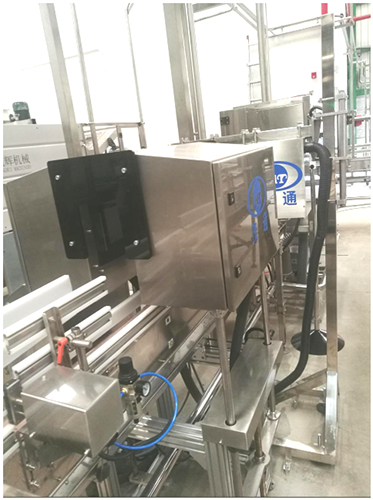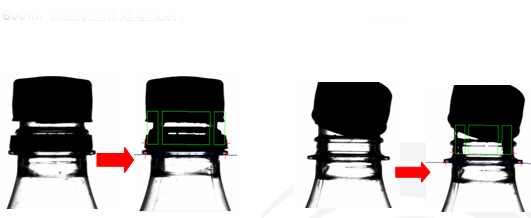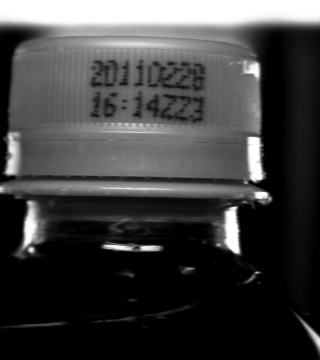Applications of Cap and Liquid Level Inkjet Printing Machines in Beverage Production Lines
1. Core Functions
Optical sensors (such as infrared and laser sensors) or vision cameras are used to detect the liquid level in bottles, preventing underfilling (impairing the consumer experience) or overfilling (causing cap leakage).
Cap Detection:
Checks the integrity of bottle caps (e.g., crooked caps, missing caps, or loose caps) to prevent air leaks and contamination.
Code Detection:
Verifies that the printed information on the bottle body/cap, such as the production date, batch number, and barcode, is legible, complete, and correctly positioned, ensuring product traceability.
2. Workflow
Bottle Infeed:
Bottles enter the inspection area via a conveyor and are neatly aligned to ensure consistent inspection.
Synchronized Trigger Detection:
Sensors trigger liquid level detection (e.g., infrared transmission method to determine the amount of light blocked by the liquid surface) and cap inspection (using height or pressure sensors to determine cap integrity).
Code Recognition:
A vision system (e.g., a CCD camera) captures the printed area and verifies the information through OCR (Optical Character Recognition) or barcode scanning. Sorting and Rejection:
Defective products (such as those with liquid level deviation, capping defects, or coding errors) are automatically removed from the production line by a rejection mechanism (e.g., air blowers or robotic arms).
Data Logging:
Test results are uploaded to the MES system, generating quality reports and supporting production traceability.
3. Technical Features
High-Precision Sensor:
Liquid level detection accuracy reaches ±0.5mm, adaptable to both transparent and opaque bottle types.
High-Speed Processing:
Low-latency algorithms are required to match production line speeds (e.g., over 30,000 bottles per hour).
Adaptable Design:
Adjustable fixtures and lighting systems are compatible with various bottle types (PET, glass jars, etc.).
False-Judgement Prevention:
AI algorithms are used to distinguish false liquid level anomalies caused by bubbles and foam.
4. Industry Application Value
Compliance:
Meets FDA, ISO, and other regulations for liquid level and labeling in food packaging.
Cost Control:
Reduces returns and recalls due to filling or coding errors. Improved Efficiency:
Replaces manual spot checks, achieving 100% inspection and reducing missed inspections.
5. Common Problems and Solutions
High False Reject Rate:
Optimize sensor sensitivity or calibrate the lighting environment.
Failed Detection of Blurred Codes:
Upgrade to a high-resolution camera or add pre-processing (such as polarization filtering).
Equipment Compatibility:
Select modular models for easy switching between product specifications.
6. Development Trends
Intelligent Integration:
Combines AI vision and the Internet of Things (IoT) to achieve real-time quality monitoring and predictive maintenance.
All-in-One Inspection:
Integrates liquid level, capping, coding, and labeling functions into one machine, reducing production line space.
Beverage companies can significantly improve product consistency and reduce quality risks with capping and liquid level coding inspection machines, making them an indispensable component of automated production lines. Equipment selection requires a comprehensive assessment based on production speed, bottle complexity, and budget (e.g., domestic vs. imported brands).








